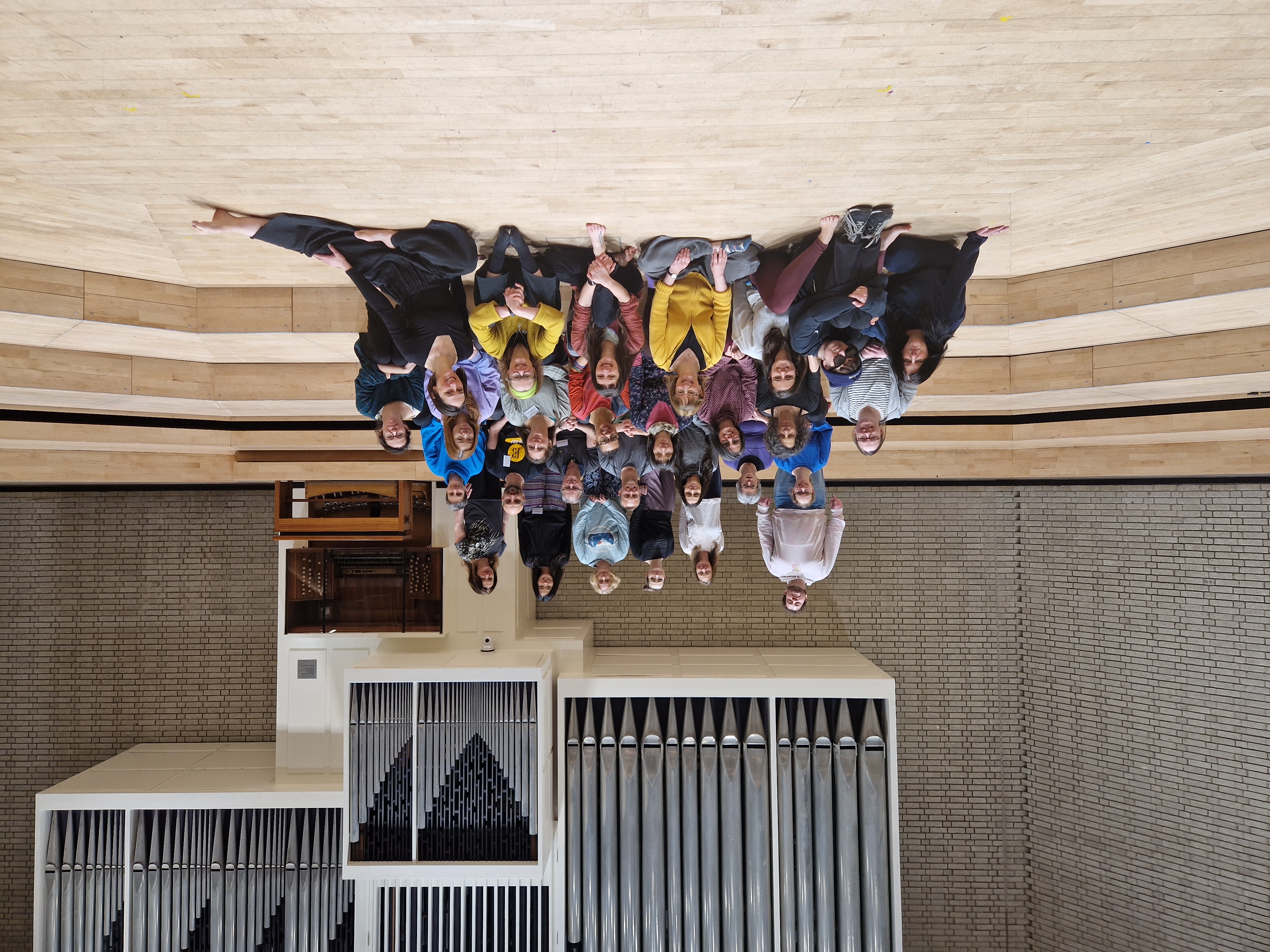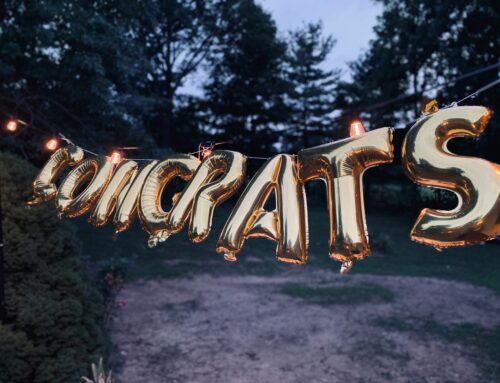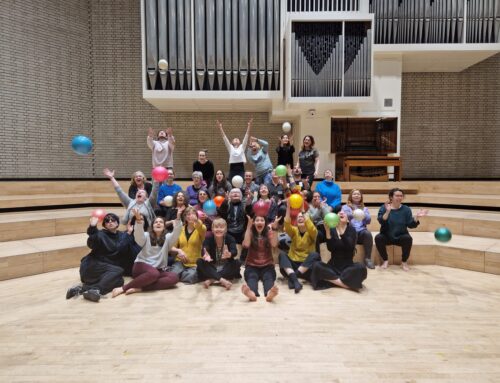April is our yearly appointment with the Dalcroze UK Spring course so we gathered once again at the RNCM for a new 4-day full immersion into Dalcroze Eurhythmics. The Sunday normally starts with registration and a chance to catch up with old and new friends at the drinks reception. In fact, this time the drinks reception was even more welcome for me as my Sunday had started much earlier with an Aural Training exam, the first practical exam towards the Dalcroze Licence. Quite nice to get it out of the way to be able to, enjoy the course without distraction.
Our group, licence and other advanced students, started with warm-up and movement technique from Ruth Jones. It’s a class that I always find extremely useful as I can see how a professional dancer approaches warming up the body prior to creative movement. As I prepare myself to lead a group in a plastique animée, I had the chance to reflect on Ruth’s session from a pedagogical point of view. During another session on movement technique, Ruth took us through the profound transformations that took place during the 20th century: a period of exploration and expansion for dance and movement arts. From the emergence of modern dance pioneers like Isadora Duncan and Martha Graham to the avant-garde experiments of Merce Cunningham and the postmodern deconstructions of Pina Bausch.
More work on creative movement was done during the two workshops led by Mary Price O’Connor, titled “What moves you?”, part of a research project she is pursuing as part of her Masters course at the Rambert School of Ballet and Contemporary Dance. Mary is investigating the role of the self in creative movement, and in particular how it is used in the Dalcrozian plastique animée. In her workshops we were encouraged to start from ourselves, discover the movement that comes from inside, and use that vocabulary to respond to the music we heard. Her approach to plastique starts from the inside of the mover, and gradually integrates their spontaneous response to the music. This is followed by personal analysis through drawing shapes on paper, and verbalising the global perception using single words. A third session will follow on Zoom, where we will process the experience and share our impressions about the process.

As well as the daily sessions in rhythmics, aural training and improvisation, I had the opportunity to observe Karin Greenhead’s dynamic rehearsal session. After a practical movement introduction based on response to and quality of music phrases, we were given a demonstration of how the use of tools, such as the trampoline and other objects, combined with movement, can effectively improve the understanding of the body of a piece of music. It was really interesting to see how following a number of simple steps, the quality of the voice, breath, intonation and general musicality of the singer, improved in a relatively short period of time.
Despite the exhausting day, there were a fair amount of social gathering, dinners out, birthday celebrations and late-night chats where a fair amount of prosecco was consumed…I should say that as someone raised in the Veneto region, I was compelled to partake of the latter solely as a sign of support for my birthplace…
The last day we had the pleasure of being the audience for Kathryn Kay’s solo plastique animée on the second movement of Hindemith’s solo viola sonata op. 31 no. 4. It was a rather emotional performance, and having it in the concert hall made it all the more powerful. This was followed by a peer-teaching session opportunity for me, also part of Licence training. It gave me a unique chance to teach a group of students, people I didn’t necessarily know and at different levels of training, which made it all the more “realistic” as a teaching experience, and challenging.
We concluded the course with an activity for all, led by Karin Greenhead, about group conducting using gesture: a concept which is at the heart of Dalcroze movement training. Many had a go at conducting groups to move in space, singing in unison and even in harmony by exclusively using gestures of the arms and hands…and a good dose of facial expression. There was lots of laughter and it was so interesting to see how the character of the conductor really came through even without words.
After that, it was time to say goodbye and make my way to a Manchester Airport for an overnight hotel as my evening flight had been cancelled…that is also a rather unfortunate tradition that seem to be following all my Dalcroze training experience…but that’s another story!



